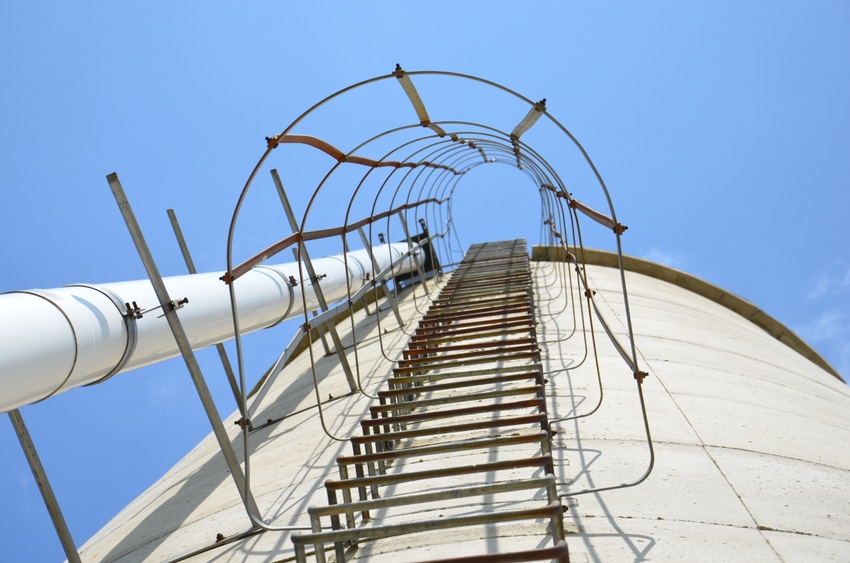Corn prices shift opportunity
Although no one will know the reality of this year’s crop until it’s in the bin, extended ownership beyond weaning could make economic sense.
June 28, 2019

Current market dynamics suggest this may be a year for cow-calf producers to consider extending ownership of their spring calves, according to Derrell Peel, Extension livestock marketing specialist at Oklahoma State University.
That’s because the same higher corn prices pressuring calf prices also add value to forage and favor higher value of gain.
By the first part of June, the Livestock Marketing Information Center (LMIC) expected steer and heifer calf prices to be lower than originally expected — down about 3% from last year, or $4 to $7 per cwt less (Southern Plains) — due to the aggressive increase in corn prices.
At the time, amid historically slow corn planting and crop development, LMIC projected corn at $4.50 per bushel. That was based on projected production of 13.0 billion bushels, which would be 1.4 billion bushels less than the previous year.
USDA’s Economic Research Service (ERS) was more bullish in the June World Agricultural Supply and Demand Estimates (WASDE), projecting production at 13.7 billion bushels. Some were surprised to see USDA slash 10 bushels from expected corn yield so early in the game, to 166 bushels per acre. WASDE increased its season-average farm price for corn 50 cents to $3.80 per bushel.
Although no one will know the reality of this year’s crop until it’s in the bin, extended ownership beyond weaning could make economic sense. Be it through the stocker pasture or feedlot, Peel emphasizes the need for careful consideration, given the accompanying risk.
Little else has changed fundamentally or cyclically. At least not yet.
Although slightly less than originally anticipated, beef production is expected to be record-large this year at 27.20 billion pounds, according to the June WASDE. Likewise, the USDA pegs total red meat and poultry production at a record-high 104.17 billion pounds.
Yet, fed cattle prices and wholesale beef values remained about par with the prior year, if not slightly higher. For instance, the May Five Area average fed steer price was $118.13 per cwt on a live basis this year. It was $118.50 last year. In beef, May’s steer price was $190.64, versus $189.50 a year earlier.
Likewise, Choice boxed beef cutout value in May ranged from $219.56 per cwt to $230.22, compared with $226.43 to $232.68 a year earlier.
Keep in mind, aggressive feedlot marketing and mostly lighter year-to-year carcass weights added support.
Cracks are showing, though, with year-over-year U.S. beef exports lower for the first four months of the year. In part, that has to do with the ongoing trade disputes between the U.S. and other nations that also pose risk to domestic and global economic growth.
“Weaker beef demand may be the biggest threat to cattle and beef markets for the remainder of the year,” Peel says. “Strong beef demand supported cattle and beef markets in 2017 and 2018, but there are signs that some weakness may be developing in beef demand in both domestic and international markets.
“While unemployment remains very low, other indications of weakness in the macroeconomy are concerning and have led to reduced forecasts for U.S. economic growth in 2019, largely due to ongoing impacts of tariffs and trade disruptions.”
In the latest USDA Outlook for U.S. Agricultural Trade, ERS analysts forecast per capita world gross domestic product growth to decrease from 2.1% in 2018 to 1.8% in 2019.
“The uncertainty plaguing cattle and beef markets probably should not change most producers’ strategic plans for this year, but it will be important to watch the multitude of volatile factors that may continue to or further impact markets,” Peel says.
“Short-run volatility may impact timing and other tactical considerations for production and marketing, and highlights the value of flexibility and the ability to be nimble in these uncertain times.”
About the Author(s)
You May Also Like




.png?width=300&auto=webp&quality=80&disable=upscale)
